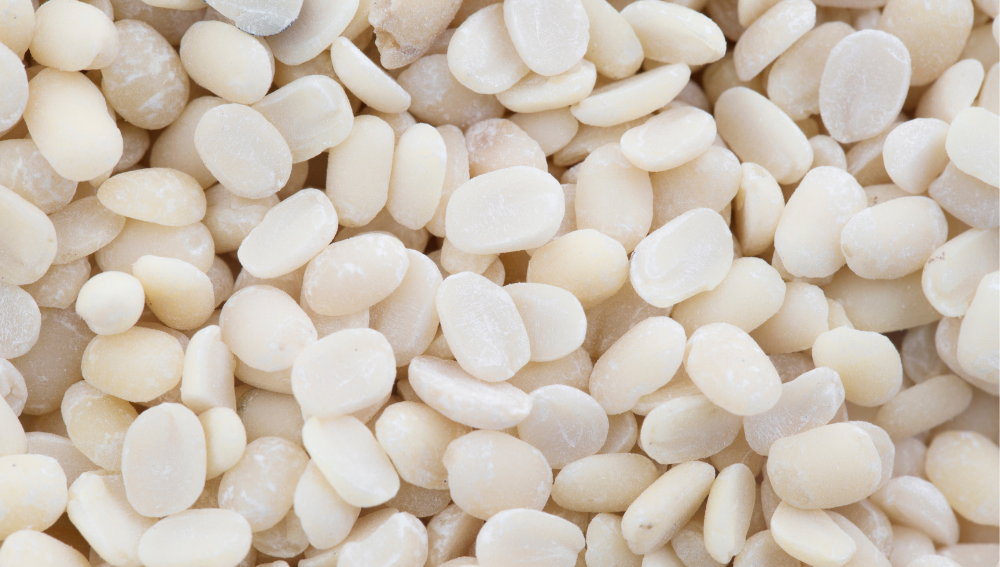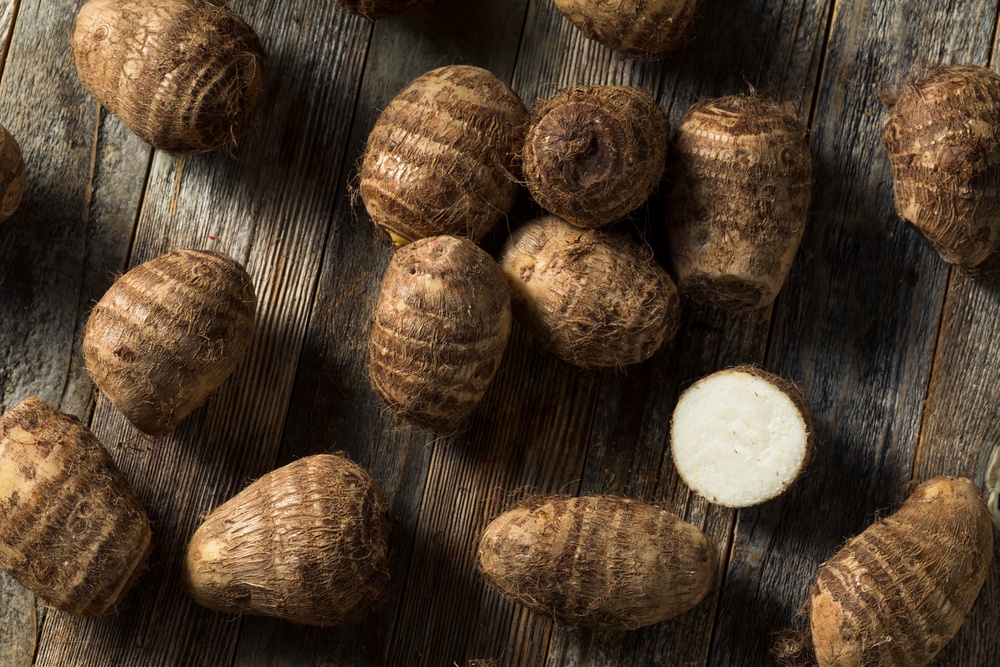Adzuki beans, also known as red mung beans or aduki beans, are small red legumes that are commonly used in Asian cuisine, particularly in Japan, China, and Korea.
These beans, with their sweet and nutty taste, have been a staple in various dishes, from savory soups to scrumptious desserts.
The flavor of adzuki beans can be enjoyed through different cooking techniques, and they have multiple health benefits, making them an ideal addition to any diet.
Understanding the taste of adzuki beans is vital for those who seek to incorporate these healthy beans into their culinary creations.
When cooked, adzuki beans are described as having a rich, earthy flavor with a hint of sweetness. Their unique taste, coupled with a delicate texture, makes them an ideal ingredient for both sweet and savory dishes.
By discovering the flavor profile and cooking methods for adzuki beans, home chefs and food enthusiasts are well equipped to explore the numerous possibilities of this versatile ingredient.
Key Takeaways
- Adzuki beans have a sweet and nutty flavor with a rich, earthy undertone.
- Their unique taste and texture make them suitable for both savory and sweet dishes.
- Knowing the flavor profile and cooking methods enables versatile use of adzuki beans in various recipes.
Understanding Adzuki Beans

Adzuki beans, also known as aduki or azuki beans, are a type of legume native to East Asia. They play a significant role in Japanese cuisine and are commonly used throughout the region. These small red beans have a unique taste and texture that sets them apart from other legumes.
The origins of adzuki beans can be traced back to East Asia, where they have been cultivated for thousands of years.
As they gained popularity, they spread to other parts of the continent, such as China, Korea, and Japan. Nowadays, they are a staple ingredient in various dishes, from sweet to savory preparations.
When it comes to taste, adzuki beans have a slightly sweet, nutty flavor, which distinguishes them from other types of red beans.
They are also less starchy, leading to a smoother texture when cooked. Adzuki beans are often boiled and mashed into a paste to create anko, a popular filling in Japanese desserts like mochi and dorayaki.
Additionally, these versatile beans can be simmered in soups or stews, added to salads, or cooked in rice dishes.
The nutritional profile of adzuki beans is also noteworthy. They are an excellent source of protein, fiber, vitamins, and minerals, making them a nutritious and flavorful addition to any diet.
Adzuki beans are a natural choice for plant-based diets, as they provide a hearty substitute for animal proteins.
In conclusion, adzuki beans are a unique legume with a rich history in East Asian cuisine. Their distinct taste and texture make them an interesting ingredient to explore in various dishes, while their nutritional value contributes to a balanced diet.
Tasting Adzuki Beans

When it comes to taste, adzuki beans offer a unique and enjoyable experience. These beans, native to East Asia, possess a mildly sweet, nutty flavor that sets them apart from other legumes.
Due to their natural sweetness, they are often used in Asian desserts, such as red bean paste.
The texture of adzuki beans is another aspect worth noting. When cooked, these small, reddish-brown beans have a smooth, creamy texture that is satisfying and comforting.
This makes them particularly versatile, as they can be incorporated into various dishes with ease.
In addition to their sweet and nutty notes, adzuki beans can also exhibit a slightly savory flavor, which is more pronounced when combined with other ingredients or seasonings.
This unique combination of sweet and savory further enhances the appeal of adzuki beans and sets them apart from more common beans like black beans or kidney beans.
While adzuki beans are often praised for their creamy texture, they can also take on a slightly meaty texture when cooked for an extended period or in certain dishes.
This characteristic makes them a popular choice for vegetarian and vegan dishes, as they can replace meat while still providing a satisfying and hearty texture.
In summary, the taste and texture of adzuki beans can be described as mildly sweet and nutty, with a smooth, creamy texture and occasional meaty characteristics.
Their unique combination of flavors and textures sets them apart from other legumes and makes them a versatile and enjoyable ingredient in a wide variety of dishes.
Cooking with Adzuki Beans

Adzuki beans are a versatile ingredient used in various dishes, offering a mild, sweet, and nutty taste. Their unique flavor profile makes them suitable for both sweet and savory recipes.
With their firm texture, they are a staple in Japanese cooking and can be found in traditional dishes from other Asian countries as well.
When preparing adzuki beans for soups and stews, it is essential to soak them overnight or use the quick-soak method. This process helps soften the beans, allowing them to cook evenly and absorb the flavors of other ingredients.
Soups and stews often utilize adzuki beans for their ability to retain shape and texture even after extended cooking times.
In addition to soups and stews, adzuki beans are often used in chili recipes. Their slightly sweet flavor complements the spiciness of chilies, providing a well-rounded taste.
When cooking with adzuki beans in savory dishes, they can be paired with vegetables, grains, and proteins for a balanced meal.
One of the most popular uses for adzuki beans is in sweet recipes, particularly for bean paste or red bean paste. This sweet concoction is made by boiling the beans, then mashing and sweetening them.
It is common to find red bean paste in pastries and desserts, such as the Japanese dorayaki or Chinese zongzi. The paste provides a rich, velvety contrast to the often light and delicate pastry.
Adzuki beans also lend themselves well to sweet and cold recipes, such as Japanese shaved ice or Korean patbingsu. The sweetened beans add depth to desserts, creating a unique combination of flavors and textures.
In conclusion, cooking with adzuki beans is a creative process that allows for a diverse range of dishes. Whether you prefer savory soups, stews, and chilies or sweet pastries and desserts, don’t hesitate to experiment with these delightful beans and discover their versatile tastes.
Adzuki Beans in Desserts

Adzuki beans have long been a popular ingredient in many East Asian desserts, particularly those from Japan. These small red beans have a slightly sweet and nutty flavor that pairs well with various sweet dishes.
When used in desserts, they are typically cooked and sweetened to form a smooth paste or left whole and sweetened for a textured addition to dishes.
One of the most well-known Japanese desserts featuring adzuki beans is the sweet red bean paste, which is used as a filling in several types of cakes and pastries.
Anpan, a traditional Japanese sweet bun, is an excellent example of this. Soft, fluffy bread encases a hearty filling of sweetened red bean paste, making it an enjoyable treat that showcases the versatility of adzuki beans in desserts.
Glutinous rice dishes also frequently incorporate adzuki beans as a complementary ingredient. A notable example is the Japanese dessert called “Sekihan” which is made with steamed sticky rice and adzuki beans.
The adzuki beans tint the rice a pinkish hue and provide a mildly sweet, earthy flavor that contrasts nicely with the sticky, chewy texture of the rice.
Ice cream and frozen treats are other dessert applications that often utilize adzuki beans. In Japan, it is common to find adzuki bean-flavored ice creams as well as shaved ice desserts topped with sweetened adzuki beans.
The mouthfeel of the cold, creamy treat against the sweet, nutty adzuki beans creates a pleasant sensation on the palate.
Mooncakes, a traditional Chinese dessert, have also incorporated adzuki beans into their repertoire of fillings. These dense cakes, usually eaten during the Mid-Autumn Festival, can be filled with various ingredients, including sweet red bean paste made from adzuki beans.
The rich, sweet bean paste offsets the slightly crumbly and buttery pastry exterior, making for a delicious and satisfying dessert.
In summary, adzuki beans lend themselves well to various dessert applications, from pastries to frozen treats and traditional Asian dishes.
Their natural sweetness and nutty flavor profile are an excellent complement to a wide range of sweet dishes, making them a versatile and delicious addition to the dessert world.
Nutritional Profile of Adzuki Beans
Adzuki beans are a highly nutritious legume, popular in various vegan and vegetarian diets. They are packed with essential macronutrients, vitamins, and minerals that contribute to a well-rounded, healthy diet.
In terms of macronutrients, adzuki beans are an excellent source of protein and fiber. A 100-gram serving of cooked adzuki beans contains approximately 7.5 grams of protein and 7 grams of fiber.
This high protein and fiber content make these beans a valuable addition to plant-based diets, providing satiety and promoting digestive health.
Adzuki beans have a low calorie count, with around 128 calories per 100-gram serving. The majority of these calories come from carbohydrates, as they contain around 25 grams of carbohydrates per serving.
Despite the relatively high carbohydrate content, the presence of fiber helps regulate blood sugar levels, making them suitable for various diets.
The mineral content in adzuki beans is quite remarkable. They are particularly rich in manganese, potassium, iron, and magnesium.
A 100-gram serving provides 35% of the daily recommended value of manganese and 19% of the daily recommended value of potassium. These minerals play crucial roles in the body, ranging from maintaining bone health to regulating blood pressure.
Iron and magnesium are also abundant in adzuki beans. One serving contains approximately 2.1 milligrams of iron (12% of the daily recommended value) and 64 milligrams of magnesium (15% of the daily recommended value).
These minerals are essential for maintaining energy levels, supporting the immune system, and promoting muscle and nerve function.
In addition to their impressive mineral profile, adzuki beans also contain various vitamins. They are a good source of B vitamins, particularly B2, B3, and B6, which support energy production and a healthy nervous system.
The beans also contain trace amounts of vitamin C, vitamin E, and vitamin K, each contributing to different aspects of overall health.
In conclusion, adzuki beans offer substantial nutritional value for those looking to incorporate more plant-based protein and essential nutrients into their diets.
Their high fiber, mineral, and vitamin content make these beans a desirable food choice for a balanced, healthy diet.
Health Benefits of Adzuki Beans

Adzuki beans are nutrient-dense legumes known for their numerous health benefits. They are packed with vitamins, minerals, fiber, and antioxidants that contribute to their ability to improve the overall well-being of an individual.
High in fiber: Adzuki beans are an excellent source of both soluble and insoluble fiber, which aids in digestion and gut health.
Consuming foods rich in fiber has been linked to better cholesterol management, reduced risk of heart disease, and improved weight loss.
Complex carbs: These beans are also composed of complex carbohydrates, which provide the body with a steady source of energy.
Unlike simple carbohydrates, complex carbs help maintain steady blood sugar levels, minimizing blood sugar spikes. This makes adzuki beans a suitable food choice for individuals with diabetes.
Folate content: Adzuki beans are rich in folate, an essential nutrient for pregnant women and those looking to optimize their heart health. Adequate folate intake has been associated with reduced risks of birth defects and heart disease.
Antioxidants: These beans contain a high concentration of antioxidants, which protect cells from damage caused by free radicals and may reduce the risk of developing chronic diseases like cancer.
With their impressive array of health benefits, adzuki beans make an excellent addition to a balanced diet. Incorporating them into meals can help promote better digestion, support heart health, regulate blood sugar levels, and even contribute to weight loss.
So, enjoy the distinct taste of adzuki beans while reaping the rewards of their nutritional value.
Storing and Prepping Adzuki Beans
Adzuki beans, particularly in their dried form, should be stored in a cool, dry place to maintain their quality and freshness. Placing them in an airtight container is advisable to prevent moisture and pests from spoiling them. Dried beans can last up to a year when stored properly.
Before cooking, it’s essential to prepare the adzuki beans accordingly. Start by sorting and rinsing the beans thoroughly under running water to remove any debris or dirt.
Next, proceed with soaking them to ensure even cooking and reduced cooking time. There are two common methods for soaking:
- Overnight soak: Place beans in a large bowl and cover with water, allowing them to sit at room temperature for at least 8 hours or overnight.
- Quick soak: Boil the beans in water for 2 minutes, then remove from heat and let them sit covered for an hour.
After soaking, drain the beans and rinse them again in cold water. They are now ready to be cooked in your preferred method, such as simmering, boiling, or using a pressure cooker.
The final result should showcase the adzuki beans’ unique taste, slightly sweet and nutty, making them a delightful addition to both savory and sweet dishes.
Adzuki Beans Versus Other Beans

Adzuki beans are a versatile legume, often used in traditional East Asian and Southeast Asian cuisines. They have a unique taste compared to other beans, such as kidney beans and black beans.
Adzuki beans have a mildly sweet and nutty flavor, while kidney beans and black beans exhibit a more earthy and savory taste.
This difference in flavor makes adzuki beans a popular choice for desserts and sweeter dishes, whereas kidney and black beans are more commonly used in savory meals such as chili, soups, and veggie burgers.
The appearance of these beans also sets them apart. Adzuki beans are smaller and have a distinctive reddish-brown color, while kidney beans are larger, elongated, and dark red. Black beans, in contrast, appear small and shiny with a deep black color.
In terms of nutrition, all three varieties of beans are packed with protein, fiber, and essential nutrients. However, their nutritional profiles do differ to some extent:
| Beans | Protein (g) | Fiber (g) |
|---|---|---|
| Adzuki | 19.9 | 12.7 |
| Kidney | 24.0 | 25.0 |
| Black | 21.6 | 15.2 |
When used as a main dish, adzuki beans can provide a meaty texture, similar to kidney and black beans. They can be utilized in various recipes, including stir-fries, salads, and even in the form of a patty for veggie burgers.
Their slightly sweet flavor allows them to blend well with a variety of seasonings and ingredients.
In conclusion, adzuki beans offer a distinctive taste and appearance when compared to other beans, such as kidney and black beans.
While each bean variety has its unique characteristics and uses, adzuki beans stand out for their versatility in both sweet and savory dishes.
Frequently Asked Questions
Are adzuki beans sweet?
Adzuki beans have a mildly sweet and nutty flavor. They may not be as sweet as some other beans, but they have a slight natural sweetness that enhances recipes like desserts and pastries.
What are adzuki beans similar to?
Adzuki beans are often compared to mung beans and black-eyed peas in terms of taste and texture. They also share a similar appearance with kidney beans but are smaller in size.
What’s so special about adzuki beans?
Adzuki beans have a low glycemic index and high protein content, making them a healthy and nutritious choice. They are a staple in Asian cuisine and are used in a variety of dishes, from savory meals to sweet desserts.
Do adzuki beans taste like kidney beans?
Adzuki beans have a unique flavor profile that is mildly sweet, nutty, and earthy. While kidney beans have a similar texture, their taste is more neutral and may not have the same depth of flavor as adzuki beans.
How to cook adzuki beans Japanese style?
To cook adzuki beans Japanese style, first rinse and soak them in water for 6-8 hours. Drain the beans and add them to a pot with fresh water, covering them by about an inch.
Bring the water to a boil, then reduce heat, cover, and simmer for 45 minutes to an hour, or until tender. Some Japanese recipes may call for sugar or sweeteners to enhance the flavor of the beans.
Adzuki beans vs kidney beans nutrition
In terms of nutrition, adzuki beans and kidney beans are quite similar. Both beans are high in fiber, protein, vitamins, and minerals.
Adzuki beans have a slightly lower calorie count and a marginally higher protein content compared to kidney beans. However, both beans are nutritious choices and can be incorporated into a healthy diet.







